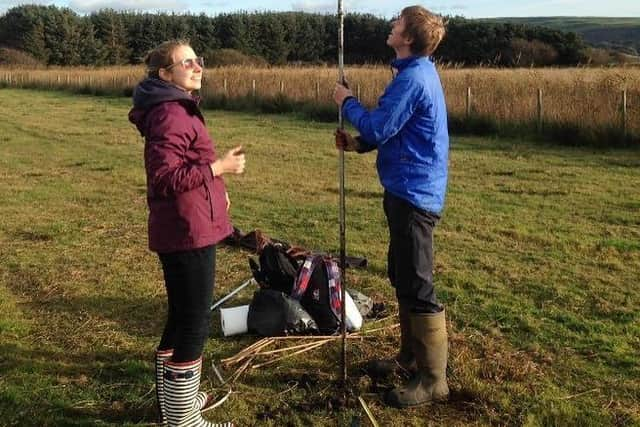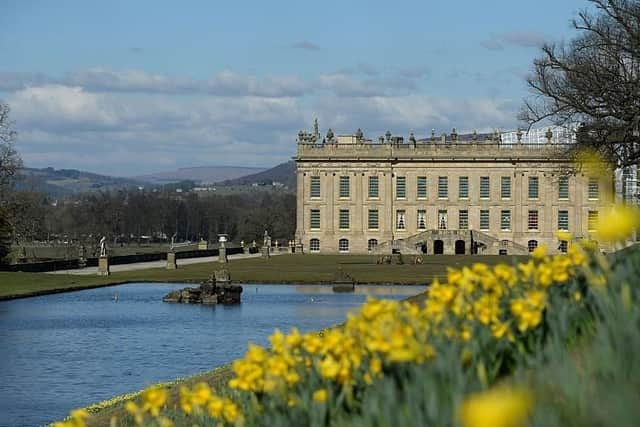Study shows our historical landscape is under threat from climate change


An academic study by an archaeologist has revealed that heritage in our green and pleasant land is under severe threat from flooding, sea level rise and erosion.
Isabel Cook, a PHD student at the University of Sheffield, believes ancient landscapes like the Lake District, Snowdownia and The Orkney Islands are at risk from climatic change.
Advertisement
Hide AdAdvertisement
Hide AdThe archaeologist said: “Imagine a UK where the historic streets and promenades of Victorian seaside towns like Brighton, Bournemouth and Aberystwyth become obscured by hard coastal defences built to protect homes and businesses from erosion, rising sea-levels and extreme flooding events. Imagine a UK where the ornamental gardens of historic estates, like Chatsworth in Derbyshire and Cragside in Northumberland, are blighted by new invasive species, pests, and diseases, and ravaged by drought. We need to ensure our grandchildren and their grandchildren can experience and learn from these places as we have done.”


It is already too late to save some sites as Roman coastal fortifications and medieval settlements on the English coastline have been destroyed by landslides and coastal erosion. Previous studies have shown the varying effects of coastal processes, like erosion and landslides, on the Forts of the Saxon Shore, a collection of Roman coastal fortresses that stretch along the South East coast of England. These include features at Dover Castle, Pevensey Castle and Burgh Castle. Some of the Saxon Shore Forts have been lost completely to erosion, such as those at Walton Castle in Suffolk.
The small town of Dunwich, has seen its coastline retreat by 600 metres. So far 10 churches and a friary have been lost there and erosion is continuing to threaten.
Isabel’s research has looked at the Dysynni Valley in Wales. Her study shows the area is at risk from sea-level rise and flooding, with the remains under severe threat of erosion. Another aspect of her research also highlights how changes in temperatures and rainfall caused by climate change are likely to affect the distribution and behaviour of plants and animals on important historical landscapes. Examples include the expansion of insect species towards higher latitudes and increased over-winter survival.
Advertisement
Hide AdAdvertisement
Hide AdHistoric woodland, parks and gardens, which characterise many historic landscapes, are also likely to be affected by changing temperatures and invasive species. This may affect plants that can be grown in parks and gardens, and alter the ecosystems of ancient woodlands.


Isabel is now calling for more action to protect the UK’s historic landscapes, which she stresses are “living museums.”
“Landscapes are hugely important to cultural heritage not just in the UK but in every country around the world. They are dynamic spaces that hold the heritage and history of the nation while functioning as tourist attractions and supporting farming industries. They are places that we interact with, and live within, forming the context of our lives, livelihoods and memories. This makes landscapes extremely important for cultural identity, so we need to be aware of the very real threat they are facing from the effects of climate change.”
English Heritage has published a risk assessment on the threat of coastal erosion to its estate and the Shifting Shores report looks at the potential impact of climate change on National Trust properties. Although these reports mention the landscape setting of heritage sites, Isabel’s research highlights how they do not specifically mention the threat to the historic landscape. Most previous academic studies into the impact of climate change on archaeological remains also omit any mention of historic landscapes.
Advertisement
Hide AdAdvertisement
Hide AdIn response, Isabel has developed a framework for including historic landscapes in climate change research. This includes assessing how vulnerable historic landscapes are to its effects.


Her system could be used by policy-makers to include the historic character of the landscape in climate change adaptation decisions.
Coastal defences can significantly alter the character of the coastline, affecting visual amenity. Works to combat rising sea levels can also result in a “coastal squeeze”, causing the loss of saltmarsh and beach.
Isabel is calling for the impact of coastal defences on the historic landscape as a whole to be considered, rather than just the effect on individual sites.
Advertisement
Hide AdAdvertisement
Hide AdShe added: “We’ve already seen coastal erosion and landslides – which are projected to worsen due to sea-level rise and increasing storminess – destroy many historic and prehistoric coastal fortifications and settlements on the south east coast of England. The loss of these features threatens the historic character of these coastal landscapes, be it a military and defensive landscape, a religious and early Christian landscape, or a landscape characterised by post-medieval trade and industry. We need to ensure that the historic landscape is factored into all climate change impact and adaptation research and management in the UK, at all stages of policy development and planning, rather than being considered only by heritage agencies.”